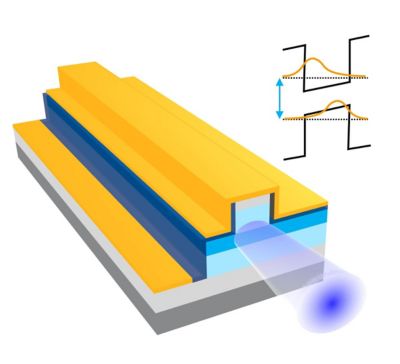-
-
Access Free Student Software
Ansys empowers the next generation of engineers
Students get free access to world-class simulation software.
-
Connect with Ansys Now!
Design your future
Connect with Ansys to explore how simulation can power your next breakthrough.
Countries & Regions
Free Trials
Products & Services
Learn
About
Back
Products & Services
Back
Learn
Ansys empowers the next generation of engineers
Students get free access to world-class simulation software.
Back
About
Design your future
Connect with Ansys to explore how simulation can power your next breakthrough.
Free Trials
ANSYS BLOG
March 31, 2021
How to Design Better Electro-Absorption Modulators
Electro-absorption modulators (EAMs) are key building blocks for fiber optic transceivers that leverage the native support of quantum wells in III-V semiconductor devices. Ansys now offers a better way to model and simulate EAMs with a new feature to accurately capture the influence of excitons on absorption via the quantum-confined stark effect (QCSE).
Figure 1: Electro-absorption modulators (EAMs) provide a mechanism for modulating the intensity of semiconductor lasers and are commonly used for optical communications.
The next episode of Ansys’ photonics webinar series outlines how Ansys Lumerical can be used to design better EAMs. Ansys extends its efficient and flexible framework for simulating active photonic devices with the ability to accurately simulate absorption in III-V semiconductors due to the QCSE.
Advantages to Electro-Absorption Modulators in Photonic Integrated Circuits
Fiber optics is steadily becoming ubiquitous in modern datacom networks and data centers driven by the need for higher bitrates and lower power. Photonic integrated circuits (PICs) play a central role in the optical transceivers used to convert encoded bitstreams to light pulses carried on fiber optic channels and back in a compact transceiver fabricated using the same fabrication technology as electronics. This allows it to be closely coupled with the rest of the design — either on the same die or the same package. This results in unprecedented bandwidth, low power consumption and low cost.
Modulators are a key component in optical transceivers and their performance is a key ingredient to achieving the higher bandwidths. Figure 2 shows a typical PIC design of an optical transmitter and receiver and includes the optical coupler, the laser light source, the photo detector and the electro-optical modulator.
By converting encoded bit sequences to light impulses, modulators play a key role in fiber optics and their performance limits the maximum attainable bandwidth for a fiber optic channel. EAMs are a variant for which the intensity of the laser beam is controlled via an electric voltage. Compared to many other modulators, EAMs have the advantages of being low-voltage, high-speed and compact. As a III-V device, EAMs can be integrated with lasers on a single chip resulting in faster/lower chirp modulation than direct modulation by the laser.
Figure 2: Electro-optic modulators play a key role in photonic integrated circuit (PIC) implementations of optical transceivers.
Electro-Absorption Modulator Simulation Based on QCSE in III-V Materials
Ansys offers all the tools necessary for designing a variety of optical modulators. With the inclusion of the III-V modulator simulation features, it is now possible to model all relevant types of modulators, including electro-optic phase shifters, thermal tunning, EAM based on the Franz-Keldysh and QCSE effects, ring modulators and many more. Using a variety of Ansys tools, modulator design can be carried out from the component level physical simulation all the way to circuit and system simulation.
Ansys now offers a feature that gives designers the tools necessary to accurately simulate the modulation response of an EAM for QCSE that can be fabricated in common III-V processes for integrated photonics devices. QCSE is the effect of an external electric field on the light absorption spectrum of a quantum well (QW). Accurate modeling of excitons is important because excitons are stable in QWs even at higher fields and room temperatures. They can significantly affect the shift and the magnitude of the absorption spectra.
The new feature includes a full k.p valence band mixing model for excitons, complex index calculation for full information about the absorption coefficient as well as the phase change, and flexible coupling between different solvers for various results. For example, you can use the CHARGE solver to export electric field into the MQW solver to calculate the absorption and complex index, and then export the complex refractive index from the MQW solver into the optical mode and CHARGE solvers to calculate the photocurrent due to absorption.
For a detailed description on how to design EAMs, register for the upcoming webinar Focus on Actives: Designing III-V Electro-Absorption Modulators. A detailed example of a GaAs-AlGaAs Electro Absorption Modulator is available for download on Ansys Lumerical’s Application Gallery.

